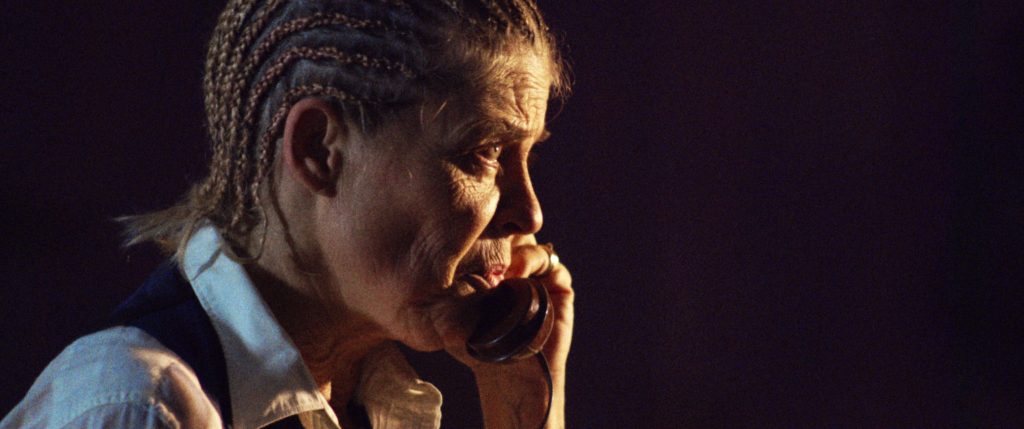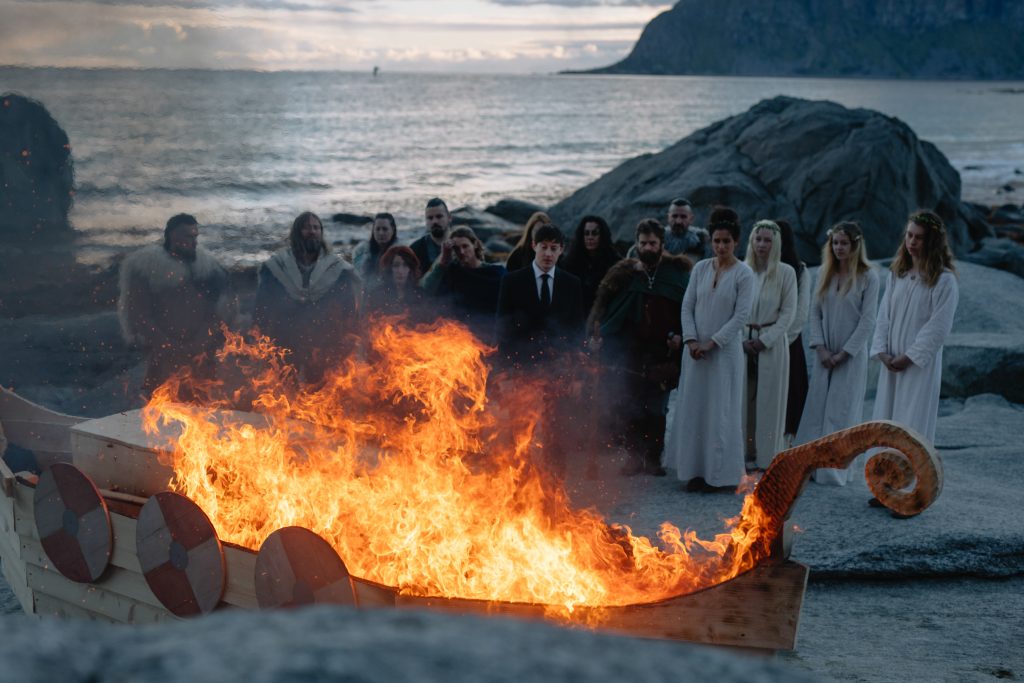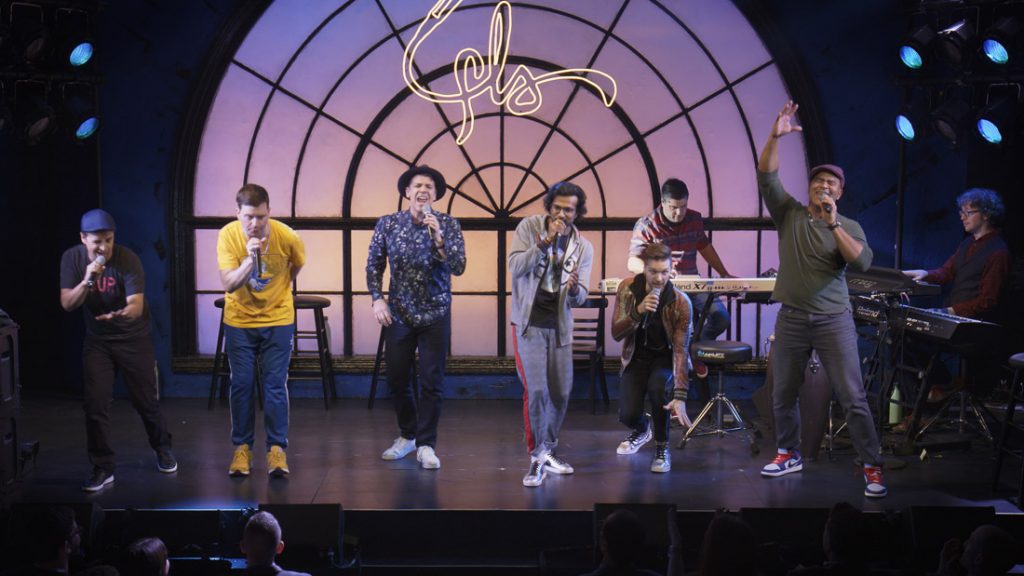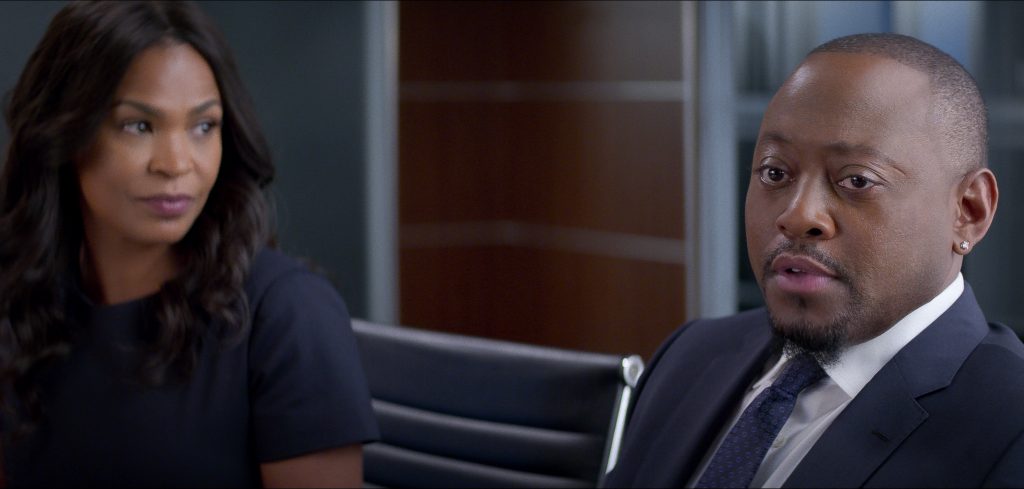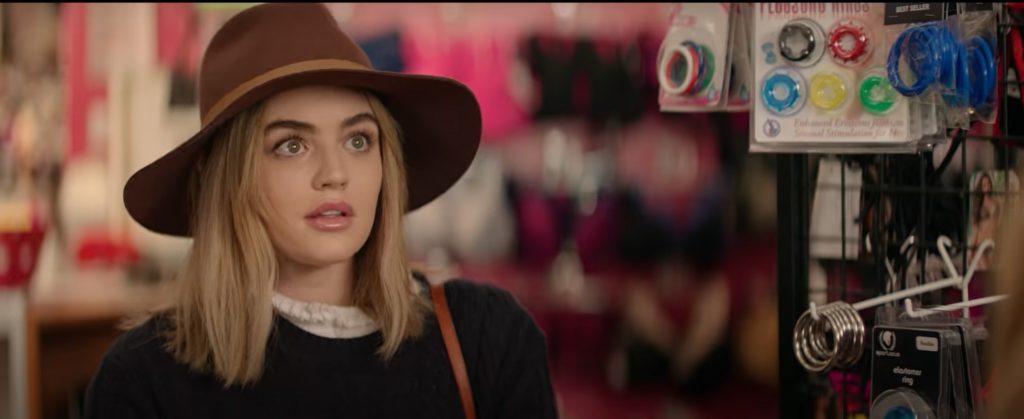July 20, 2020
by Carla Hay
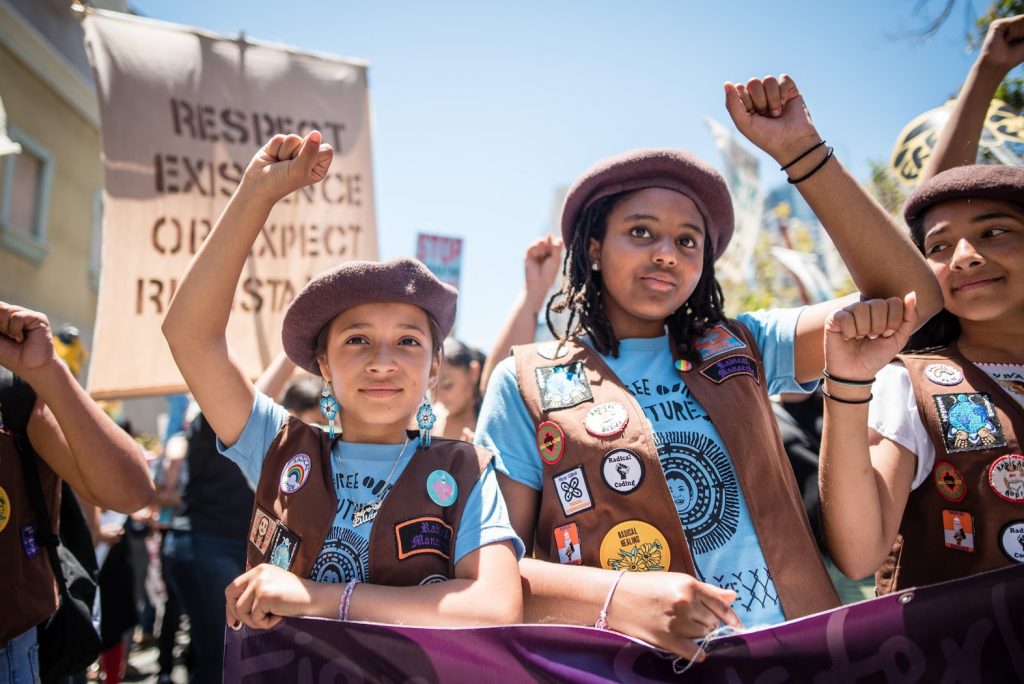
Directed by Linda Goldstein Knowlton
Culture Representation: Taking place in California, the documentary film “We Are the Radical Monarchs” features a racially diverse group (African American, Asian and Latino) of parents, women and girls who are involved in the Radical Monarchs, a social-justice group for girls of color that was formed in Oakland as an alternative to the Girl Scouts.
Culture Clash: The Radical Monarchs are taught politically progressive ideals, but the group gets criticism from conservatives who think the group is inappropriate for children or exclusionary of white people.
Culture Audience: “We Are the Radical Monarchs” will appeal primarily to politically liberal people or people who believe in social-justice groups.

How young is too young for kids to learn about social-justice activism? That’s up to children’s parents or legal guardians, but the documentary “We Are the Radical Monarchs” shows how two unapologetically liberal-minded women in the San Francisco Bay Area decided to form a social-activist group for girls called the Radical Monarchs, as an alternative to the non-political Girl Scouts.
Directed in cinéma vérité style by Linda Goldstein Knowlton, “We Are the Radical Monarchs” (which was filmed from 2015 to 2017) obviously won’t appeal to everyone politically, but at the very least it shows how the members of the Radical Monarchs are being taught to express their rights to free speech in their quest to make the world a more open-minded and tolerant place. The girls in the documentary are bright, inquisitive and respectful of each other and of adults.
The Radical Monarchs launched in December 2014, in Oakland, California, when co-founder Anayvette Martinez, a single mother, saw that her then-10-year-old daughter Lupita was part of a Girl Scout troop that treated issues related to people of color as secondary or not as important as other issues. As Martinez says in the documentary, “I wanted her to have a troop that centered her as a girl of color.”
Martinez (who was a community organizer at the time) joined forces with like-minded Marilyn Hollinquest to co-found the Radical Monarchs specifically for girls of color and as a way to teach them to be involved in social-justice issues. They decided to affiliate the Radical Monarchs with Black Lives Matter, after being inspired by the August 2014 protests in Ferguson, Missouri, over the fatal shooting of Michael Brown (an 18-year-old unarmed African American) by white police officer Darren Wilson.
The documentary shows Martinez and Hollinquest leading the Radical Monarchs’ first troop (with girls ranging in ages from 8 to 11) in discussions about race, gender identity, LGBTQ issues, police brutality, Black Lives Matter, peaceful protests, immigration, affordable housing, civil rights and fighting against discrimination. The Radical Monarchs often have guest speakers (who are usually activists) at their meetings. Transgender women and people with disabilities are among those shown in the documentary as guest speakers.
And just like the Girl Scouts, the Radical Monarchs get badges. But the Radical Monarchs badges are for achievements in political activism and social justice, rather than specific careers or non-political hobbies. (Black Lives Matter co-founder Alicia Garza is shown attending a few Radical Monarchs events as a show of support, such as when she hands out merit badges.) And even though the Radical Monarchs are not old enough to vote, the girls are very politically involved, since the documentary shows them doing things such as attending protests and marches (including the 2017 Women’s March in San Francisco); speaking at city council meetings; and visiting with politicians in California’s state capital of Sacramento.
Hollinquest (who has a background as a development director dealing with laborer rights) explains the need for the Radical Monarchs to exist: “Youth get underestimated a lot [for] how much they see, hear and know. And because of the adults around them being uncomfortable talking about topics, then things don’t get talked about. So, for us, the Radical Monarchs is the safe place where they can come. We are trained, and we can talk about these issues in a comfortable way.”
Martinez and Hollinquest met while they were in graduate school at San Francisco State University. Both women say in the documentary that they identify as “queer” (Martinez and Hollinquest are just friends, not a couple) and outspoken feminists. In addition, Hollinquest and Martinez say that they are teaching their Radical Monarch members to have progressive views, but they also encourage the girls to always ask questions about what they are taught and what they see around them.
The documentary shows that self-acceptance, inclusion and standing up for others who are being discriminated against are values that are constantly being taught to the girls. There are question-and-answer sessions where the girls are allowed to ask anything they want. And they are encouraged to support each other like sisters. For example, when one of the girls breaks down and cries when remembering how she was bullied in school because of her skin color, the other Radical Monarchs rally around to hug her and comfort her.
And the girls are taught to look carefully at the media to understand that who controls a media outlet has a lot to do with how that media outlet shapes stories and puts out certain images. For example, in a session called Radical Fashion, members of the Radical Monarchs are shown two different female-oriented magazines—InStyle and Ms.—and asked to point out the differences in how women and girls are portrayed in each magazine. Not surprisingly, the girls say that they think Ms. portrays the female gender more realistically and has smarter articles. The girls are then told that Ms. magazine was founded and is owned by women, while InStyle is not.
“We Are the Radical Monarchs” thankfully doesn’t get distracted with bogging down the documentary with “expert” political commentary from people who have nothing to do with the organization. Instead, the filmmakers let the interview commentary come directly from people who are involved with the Radical Monarchs, as members, leaders or parents. For example, when the Radical Monarchs visit the California State Capitol Building in Sacramento, the film shows highlights of the visit as the girls interact with the politicians there (such as state senator Holly Mitchell), rather than pivot to overstuffing the documentary with separate interviews with the politicians.
One of the Radical Monarch girls named De’yani, who’s interviewed in the documentary, comments on being the only African American girl in her Girl Scouts troop. By contrast, in the Radical Monarchs, she says, “You get to learn cool stuff about social justice and race, compared to talking about selling cookies and money and stuff.”
Indeliso Carillo, a mother of one of the Radical Monarch girls, comments: “So many of our kids feel invisible. And this is a place for them to not feel invisible and to really develop into believing that they have a place here and a voice that needs to be heard.” Laticia Erving, another mother of a Radical Monarch, adds: “Radical Monarchs gives her a sisterhood of young girls who look like her. Their focus is making a change in the world.”
The documentary also addresses the criticism, ridicule and hate that the Radical Monarchs get from people who think the group is damaging to children. Archival clips from Fox News are included as expressing some of this criticism, which usually argues that the girls are being “brainwashed” and that the Radical Monarchs are a “racist” group.
Although the Radical Monarchs leaders do not say explicitly say that white girls are not allowed to join the group, the larger question that the documentary filmmakers should have asked is, “How many white girls have wanted to join the Radical Monarchs?” Because if the answer is “none,” then there’s no racist discrimination. But if white girls wanted to join but were turned away (and the documentary did not present any evidence that this has happened), then that would definitely be racial discrimination.
It also speaks to another big question: “How many white parents would feel comfortable letting their child join a group where a white person would be in the racial minority and the group discusses uncomfortable topics such as racism against people of color?” The Radical Monarchs leaders say that their members already know what it’s like to live every day in a country where they are a racial minority and treated like a second-class citizen just because of their race. And that’s why the group was created in the first place: so that their members can be in a group where being a non-white person isn’t a “minority” stigma.
Rene Quinonez, a father of one of the Radical Monarchs, comments on the current reality of living in the United States: “White folks set the standards of beauty … education … everything in our community. That’s a huge injustice. When we create a space for these young women, it’s not excluding everyone. It’s about recognizing the injustice of these women not having this space [in the overall U.S. population].”
One of the most emotionally moving scenes in the documentary is when the Radical Monarchs visit with former Black Panther Party member Cheryl Dawson, who tells them what it was like to fight for civil rights in the 1960s and 1970s. One of the girls asks Dawson if police brutality has gotten better or worse since the days when she was a Black Panther. Her chilling response: “It’s gotten worse.”
Several of the adults in the documentary (including Dawson and Radical Monarchs co-founders Martinez and Hollinquest) say that they wish that they had a group like the Radical Monarchs when they were kids. It’s mentioned many times in the film that one of the biggest issues facing the group leaders is how to expand their program, since they are constantly being asked if they will start Radical Monarchs chapters in cities outside of the San Francisco Bay Area.
As with many start-up nonprofits, fundraising and not having enough money are major issues. And the documentary shows how grass-roots the Radical Monarchs organization was in its first few years: The group didn’t have an official office and instead worked out of Martinez’s home. However, the Radical Monarchs did get a lot of media coverage almost from the beginning of their launch. That exposure was crucial in helping their name recognition and building on that success.
The documentary also gives a personal background on Martinez and Hollinquest, who say that even though they share the same political ideals (and coincidentally, the same birthday), they have very different upbringings and personalities.
Martinez, who says she’s the more extroverted co-founder, grew up in San Francisco as the daughter of Central American immigrants. Her mother was a feminist and her “biggest advocate” who encouraged Martinez to get a college education, while Martinez’s conservative father expected her to have a more old-fashioned lifestyle. Martinez says she was the first openly queer female editor-in-chief of the California-based college student newspaper La Gente, and she got a lot of death threats because of it.
Hollinquest, who says she’s more introverted than Martinez, grew up in a strict Pentecostal household in the rural city of Tulare, California. Her parents were so conservative that Hollinquest says that she wasn’t allowed to wear trousers when she was a child. And she was also taught that women had to be submissive to men. Needless to say, her coming out as queer must have been a shock to her family, although Hollinquest doesn’t go into details over what that experience was like for her. She’s obviously in a place of self-acceptance now, and is spreading that self-acceptance message to girls who might not get that support in their own homes or at school.
A great deal of the documentary shows how Martinez and Hollinquest launched Troop 2 for the Radical Monarchs while still leading Troop 1 and while still working in their day jobs. It’s as exhausting as it sounds. Fortunately, they had plenty of volunteers who eventually came on board to lead Troop 2. The documentary includes footage of Martinez and Hollinquest having meetings planning their goals for the Radical Monarchs’ growth and expansion.
Some of the girls (including Martinez’s daughter Lupita) helped evaluate potential leaders of Troop 2 and gave their feedback on which ones they thought were the best. Lupita is one of the most articulate and poised girls in the group, but there are no signs that she let her mother’s Radical Monarchs position of power go to her head. And when Lupita tells an emotional story about how she and her mother were evicted from their home after the landlord raised the rent to an amount they could no longer afford, it isn’t with a self-pitying attitude but with a take-charge positive attitude that the experience fuels their fire to fight for affordable housing for people who are less fortunate.
“We Are the Radical Monarchs” doesn’t try to hide that it’s heavily biased toward liberal causes and the Democratic Party. (The documentary includes the expected reactions to the 2016 U.S. presidential election.) But putting party politics aside, this documentary is a fascinating look at how girls are speaking out and taking action for human-rights issues that matter deeply to them. And it wouldn’t be surprising if some Radical Monarchs alumni get elected to political office someday.
PBS premiered “We Are the Radical Monarchs” as part of the “POV” series on July 20, 2020.


